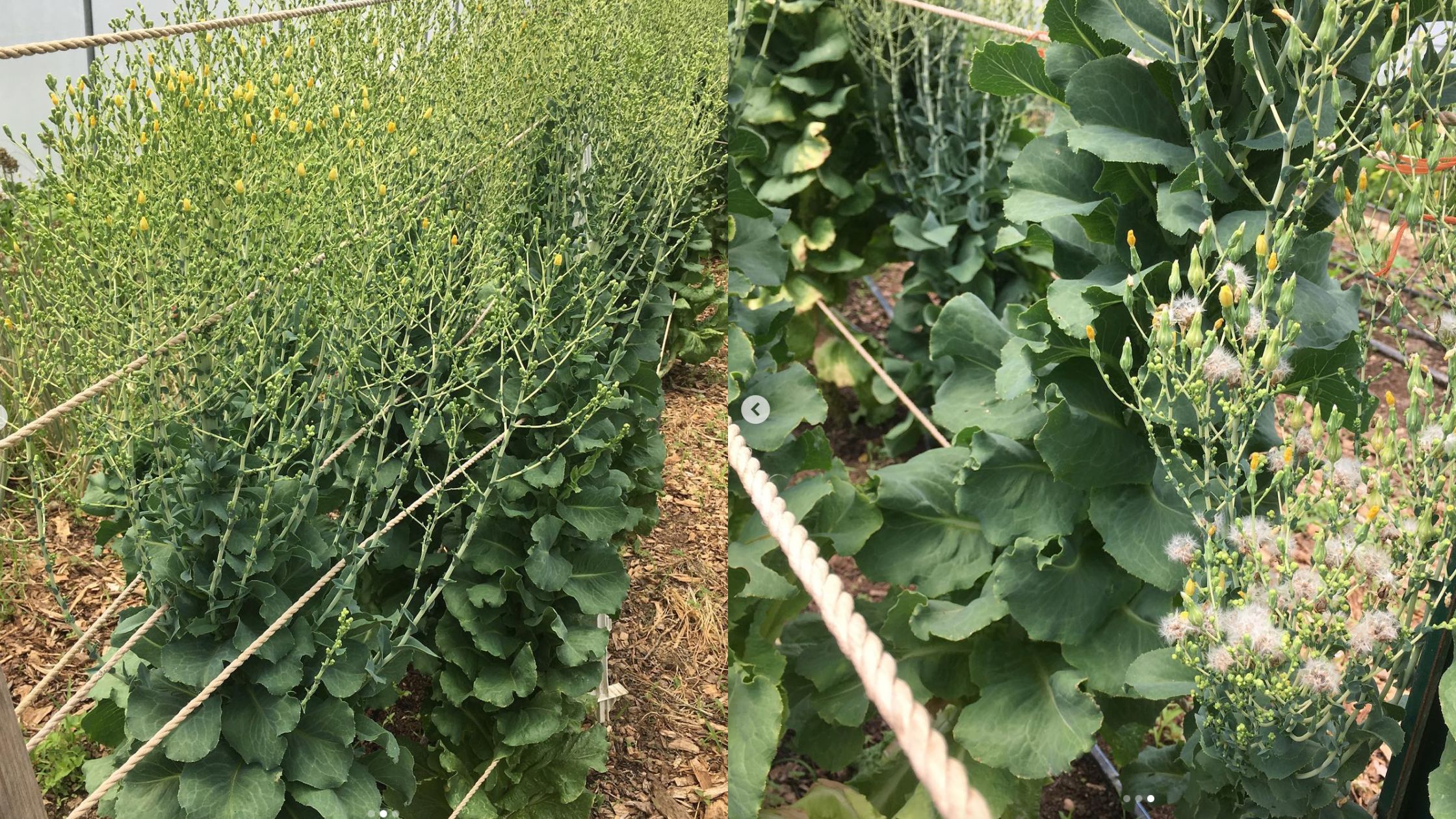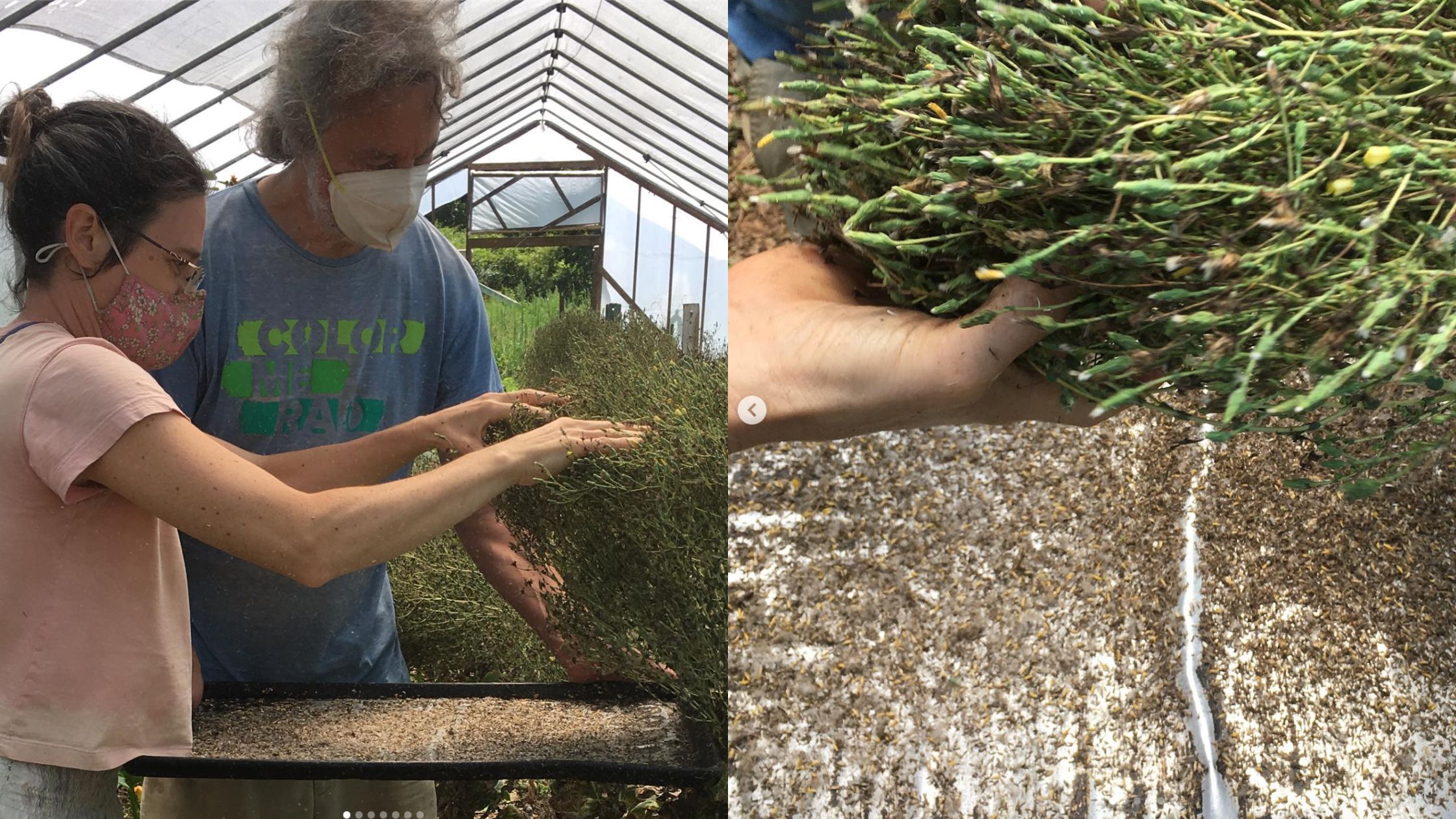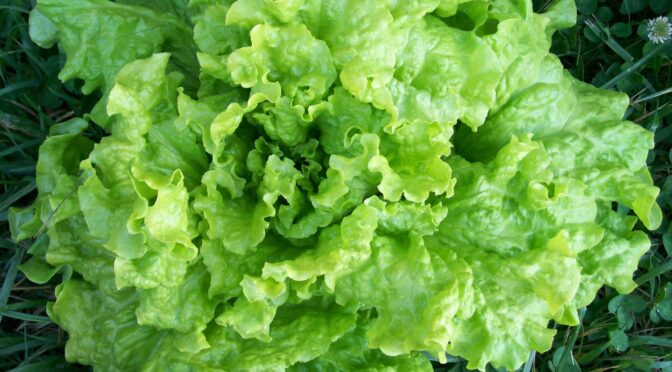Lettuce is an excellent crop for beginner gardeners, but it’s also great for beginner seed savers! Lettuce is an annual crop that it completes its entire life cycle and produces seed in one season. Lettuce is also self-pollinating, doesn’t require huge isolation distances, and just a few plants in a small garden can produce viable seed. There’s also an incredible myriad of lettuce cultivars to choose from! Here are the eight simple steps to saving lettuce seed.
1. Choose an Open-Pollinated Variety
You can probably find hundreds of lettuce varieties available on seed racks and websites today. You can save lettuce seed from whatever variety takes your fancy, as long as it’s open-pollinated.
Open-pollinated refers to how the seeds are bred. In an open-pollinated system, plants are pollinated by other plants of the same variety, creating seed that will produce “true to type” or display the same characteristics each season. This type of seed makes up most of the seeds we carry at Southern Exposure.
All heirlooms are open-pollinated, but not all open-pollinated seeds are heirlooms. Heirloom refers to the age of a variety. We consider heirlooms to be those open-pollinated varieties bred before 1940.
2. Plant Your Lettuce
Lettuce germinates well and thrives in the cooler temperatures of spring or fall. Sometimes we plant in spring, and sometimes, we plant in fall and overwinter crops. Lettuce bolts, meaning it goes to flower in the warm temperatures of summer. You can direct sow or transplant your lettuce.
When planting your lettuce for seed, you should isolate different varieties by a minimum of 12 feet for home use. For pure seed, isolate varieties a minimum of 25 to 50 feet.
Sow seed 1/4″ deep and thin to 10 to 16 inches apart for fresh eating or about two feet apart for seed saving, depending on the variety. You can plant loose-leaf varieties more closely for fresh eating but try to maintain good air circulation around the plants. Soil should be cool and moist during the germination period.
While it isn’t strictly necessary here in Virginia, with rain about every 1-3 weeks in the summer, it’s easiest for us to grow lettuce seed under cover in high tunnels.
 3. Tend Your Lettuce
3. Tend Your Lettuce
Lettuce grown for seed should be watered and weeded like lettuce grown for fresh eating. You’ll also want to watch your lettuce for signs of pests and disease. Spray off aphids with the hose and treat other pests as needed. At the first signs of disease, remove any infected plants.
When the plants bolt, they get quite tall and sometimes lodge and tip over. Use stakes and twine to keep plants upright and ensure good quality seed.
4. Save an Appropriate Number of Plants
If you’re growing some lettuce for fresh and eating and some for seed, allow enough plants to bolt and form seed. For viable seeds, you only need seeds from one plant. However, to maintain seed over generations, save seed from five to ten plants. If you’re trying to save a rare variety, it’s best to save seed from at least twenty plants if you can.
5. Allow the Seeds to Mature
Lettuce seed develops and matures on each branch over a period of time. We often have to harvest lettuce seed from a crop every week or so for a few weeks as it matures. When the lettuce seed “feathers,” when the parachute-like pappus emerges, it’s time to harvest the seed.
 6. Harvest the Seeds
6. Harvest the Seeds
There are several ways to harvest the seeds. You may shake the seed heads into a paper bag. When dealing with just a few plants, you can clip a mature branch, hand-pull the seeds, and place them into a container.
In the photo above, Ken holds a large baking tray to catch the seeds that Irena massages off the seedheads. It’s sticky work! Lettuce sap contains latex, so we pick up a lot of sticky residue and seeds.
7. Clean and Process Your Lettuce Seed
After harvesting, the seed needs to be dried and cleaned. You can gently rub the seeds between your hands or against a light screen material to detach them from their pappus and any other loose debris.
Depending on the chafe you’ve got in your seeds, you’ll probably need to screen and winnow your seeds. You’ll need a much gentler breeze than you would for larger seeds like beans; lettuce seed is tiny. Take care not to lose it!
The seed should be fully dry when you store it. If you try to bend a seed in half, it should break rather than flex.
8. Store Your Lettuce Seed
Store your lettuce seed in dry airtight containers somewhere cool and dark. When stored properly, lettuce seed may last for up to six years.
Growing lettuce and saving seed from your crop is a great project for beginner gardeners and seed savers. Following these steps, you can help steward an open-pollinated lettuce variety and have seed for years of gardens to come!

